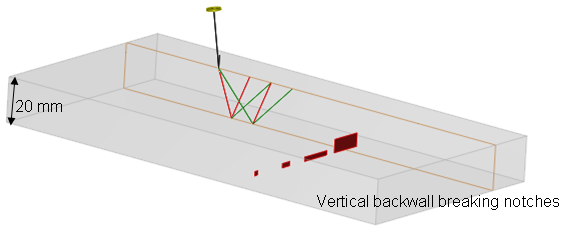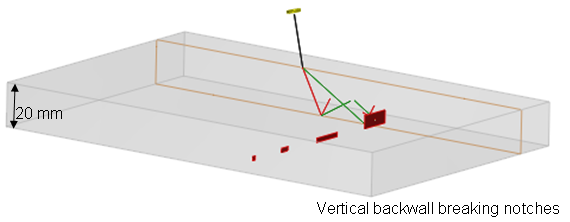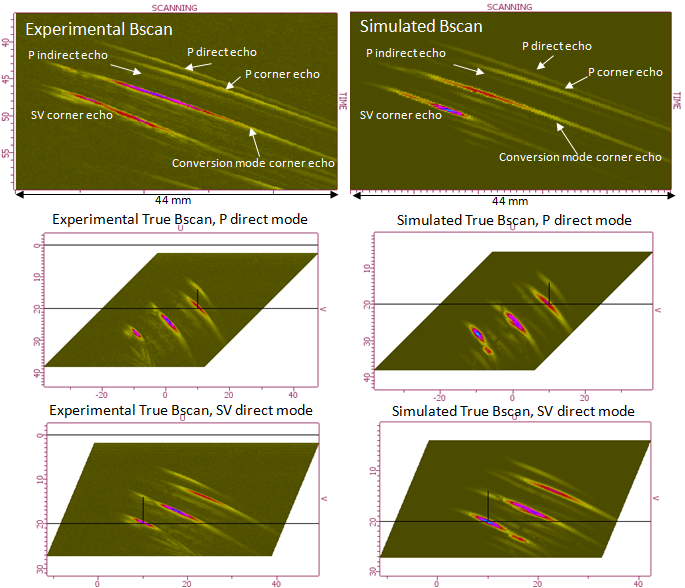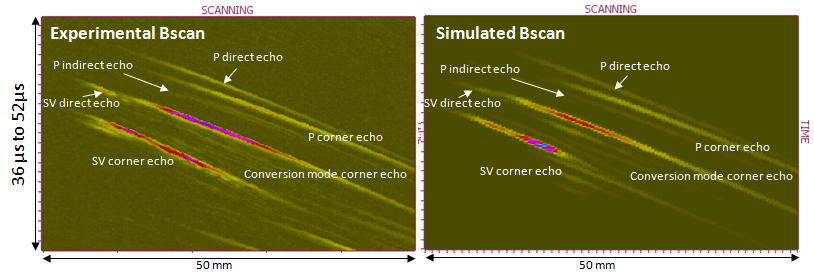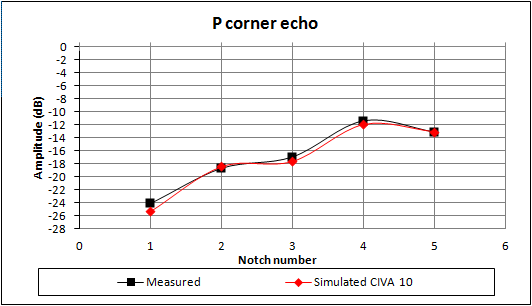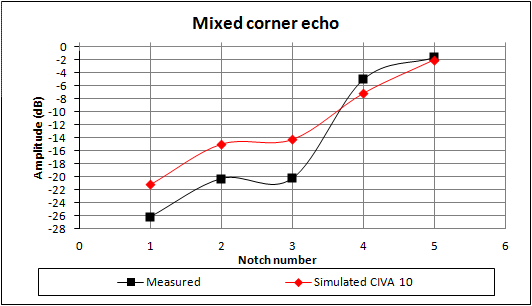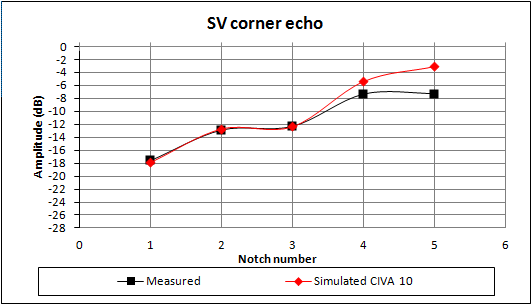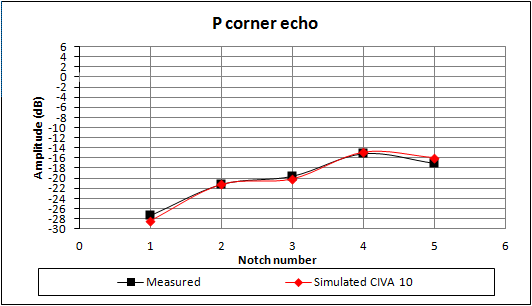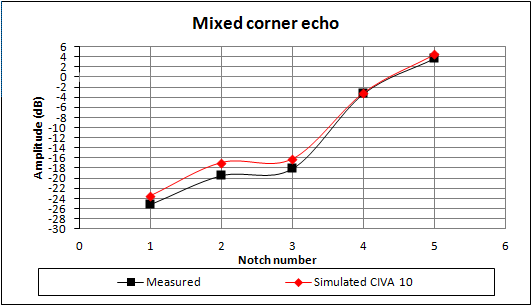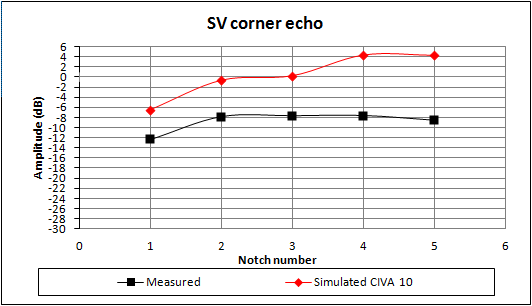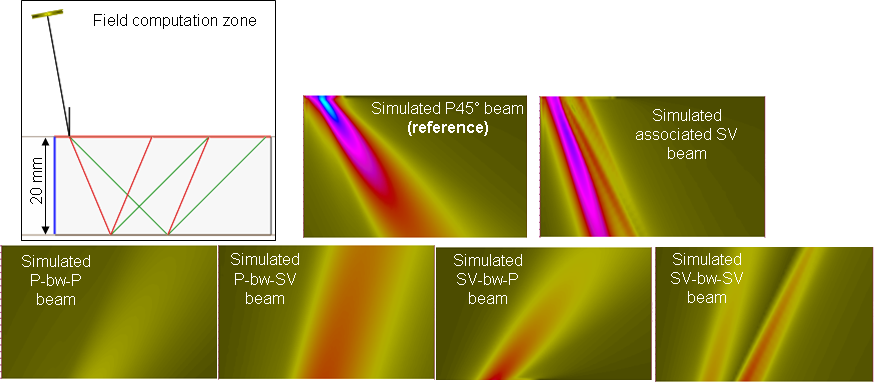Corner echoes with P mode: Influence of the refraction angle
Summary
CONFIGURATION
P45 and P60 immersion inspections are carried out to evaluate the influence of the refraction angle on the echoes generated by a backwall breaking notch. The inspected specimen is a planar steel mock-up containing 4 backwall breaking notches of dimensions 6×15 mm, 2×15 mm, 2×5 mm et 2×2 mm.
The inspection is performed with a circular immersion (P45 and P60) probe of Ø6.35 mm diameter with a water path of 25 mm. The transmitted signal has a frequency of 4.7 MHz with a bandwidth of 56 % and a phase of 255°.
RESULTS
The following figures show experimental and simulated Bscans for the 6×15 mm notch. The reconstruction is performed according to the paths in P or SV modes.
B-scans for the P45 inspection
B-scans for the P60 inspection
On the Bscans, P, SV and mixed corner echoes can be seen. Direct and indirect diffraction echoes are also identifiable.
Each notch is associated with a number in order to ease the results display:
| Notch number | 1 | 2 | 3 | 4 | 5 |
| Height | 2 mm | 2 mm | 2 mm | 6 mm | Specimen corner |
| Length | 2 mm | 5 mm | 15 mm | 15 mm | Specimen corner |
The results are calibrated relatively to a SDH of Ø2 mm diameter located at 5 mm depth.
There is a good agreement between simulation and experiments for P and SV corner echoes amplitude except for the one in SV mode associated with the specimen corner (4 dB difference). The amplitudes for the mixed corner echo of the highest notch (6×15 mm) are in good agreement too. However, there are some discrepancies (up to 6 dB) between simulation and experiments for the mixed corner echo of 2 mm height notches with any extension (2 mm, 5 mm or 15 mm).
In the P60 case, there is a very good agreement between experimental and simulated P corner echo amplitude for all notches.
This is the same for the mixed corner echo (less than 3 dB difference).
However, there are important differences (up to 12 dB) on the SV corner echo of notches detected with P60 waves.
The splitting into two contributions of the simulated SV corner echo is still present. This splitting appears for all notches. As for the previous probe, the splitting is present in the incident beam and in the beam after skip on the specimen backwall. The P60 configuration is more sensitive to it because the SV radiated beam is closer to the critical angle. Then, the CIVA over-estimation for the SV corner echo is more important.
Continue to Conclusion and discussion on discrepancies
Back to Corner Echoes with P mode
Back to Corner Echoes

